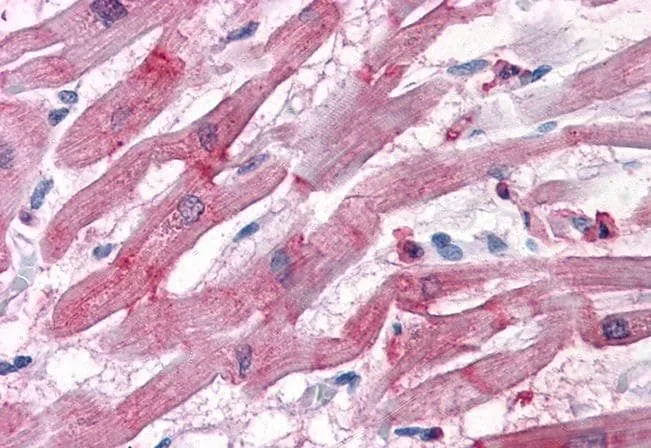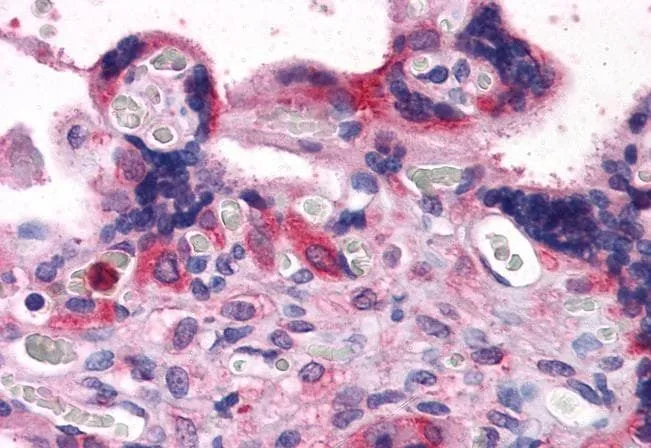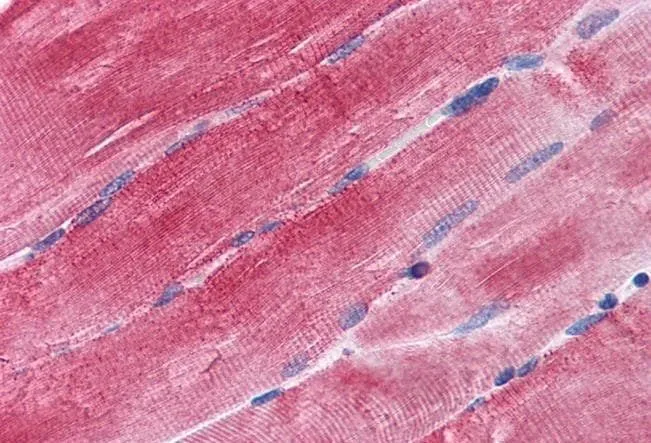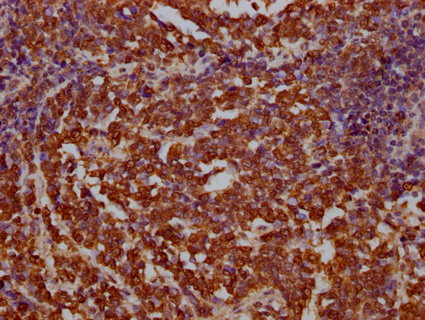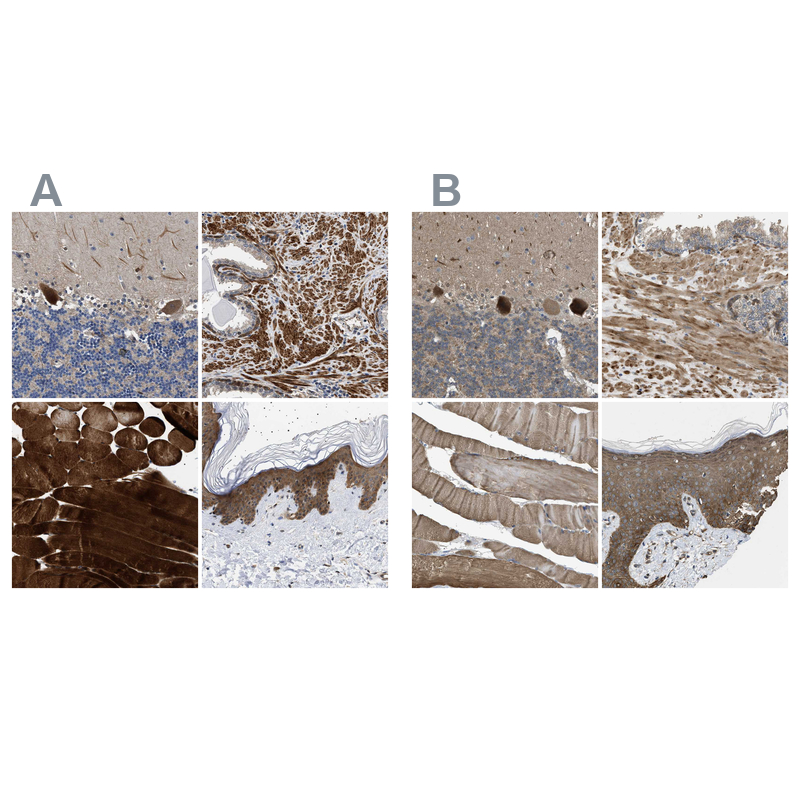
WB analysis of human skeletal muscle lysate using GTX25898 BAG3 antibody, C-term. Dilution : 0.1microg/ml Loading : 35microg protein in RIPA buffer
BAG3 antibody, C-term
GTX25898
ApplicationsWestern Blot, ImmunoHistoChemistry, ImmunoHistoChemistry Paraffin
Product group Antibodies
TargetBAG3
Overview
- SupplierGeneTex
- Product NameBAG3 antibody, C-term
- Delivery Days Customer9
- Application Supplier NoteWB: 0.1-0.3microg/ml. IHC-P: 3.75microg/ml. *Optimal dilutions/concentrations should be determined by the researcher.Not tested in other applications.
- ApplicationsWestern Blot, ImmunoHistoChemistry, ImmunoHistoChemistry Paraffin
- CertificationResearch Use Only
- ClonalityPolyclonal
- Concentration0.50 mg/ml
- ConjugateUnconjugated
- Gene ID9531
- Target nameBAG3
- Target descriptionBAG cochaperone 3
- Target synonymsBAG family molecular chaperone regulator 3; BAG-3; BCL2 associated athanogene 3; BCL2-binding athanogene 3; bcl-2-binding protein Bis; Bcl-2-binding protein BIS transcript 2; BIS; CAIR-1; docking protein CAIR-1; MFM6
- HostGoat
- IsotypeIgG
- Protein IDO95817
- Protein NameBAG family molecular chaperone regulator 3
- Scientific DescriptionBAG proteins compete with Hip for binding to the Hsc70/Hsp70 ATPase domain and promote substrate release. All the BAG proteins have an approximately 45-amino acid BAG domain near the C terminus but differ markedly in their N-terminal regions. The protein encoded by this gene contains a WW domain in the N-terminal region and a BAG domain in the C-terminal region. The BAG domains of BAG1, BAG2, and BAG3 interact specifically with the Hsc70 ATPase domain in vitro and in mammalian cells. All 3 proteins bind with high affinity to the ATPase domain of Hsc70 and inhibit its chaperone activity in a Hip-repressible manner. [provided by RefSeq, Jul 2008]
- Storage Instruction-20°C or -80°C,2°C to 8°C
- UNSPSC12352203
References
- HspB8 chaperone activity toward poly(Q)-containing proteins depends on its association with Bag3, a stimulator of macroautophagy. Carra S et al., 2008 Jan 18, J Biol ChemRead more

